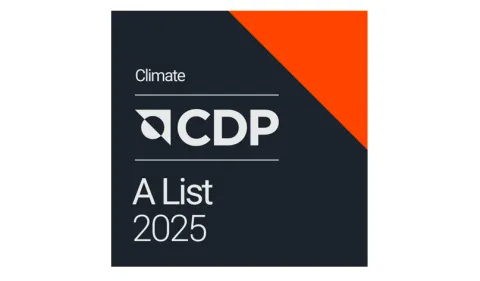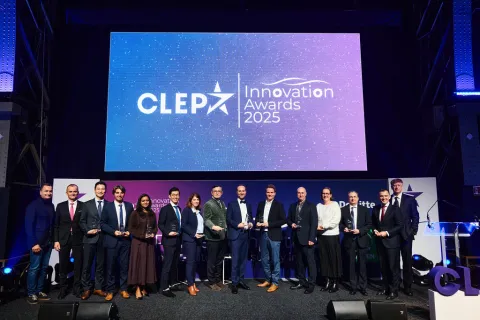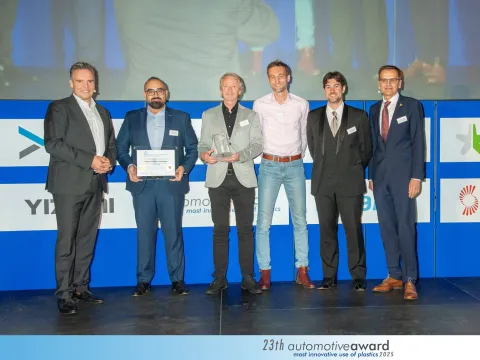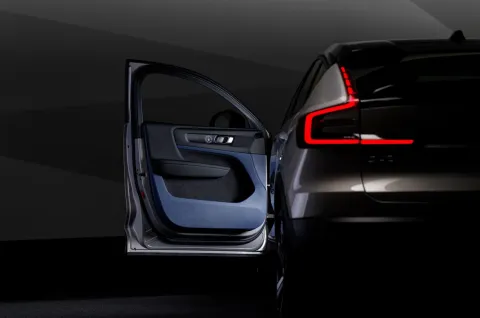
Decarbonizing the automotive industry: a holistic challenge

Over 20% of global CO₂ emissions are linked to transport – of which the vast majority come from road transport, with personal vehicles accounting for half of that total. The automotive sector thus finds itself at the forefront of the urgent efforts required to decarbonize our lifestyles.
Electrification, a key lever but not sufficient
Our industry is currently undergoing the biggest transformation in its history, with the mass electrification of passenger cars and light commercial vehicles. Switching to electric propulsion is a key lever towards decarbonizing transport worldwide because, in use, an electric vehicle can achieve a threefold reduction in CO₂ emissions when compared to a combustion vehicle.
Numerous technological solutions already exist and are set to coexist, alongside hybrid (HEV), plug-in hybrids (PHEV) and extended-range electric vehicles (EREV), which are already helping to reduce emissions in use and are expected to remain on the market for the duration of the transition. These include battery electric vehicles (BEV), hydrogen fuel cell vehicles and hydrogen internal combustion engines (H2 ICE) – the latter two being particularly well suited to heavy-duty transport. This is why a supplier like FORVIA provides power management components for BEVs as well as hydrogen tanks for vans. It also remains essential to offer ultra-low-emission technologies to reduce the environmental impact of internal combustion engines still in circulation – an often-overlooked but vital part of the transition.

However, electrifying the vehicle fleet isn’t a cure-all. While the overall carbon footprint of an electric vehicle over its lifetime is 50 to 70% lower than that of an ICE vehicle, its production phase is more carbon-intensive – largely due to current methods of extracting the metals used in battery manufacturing. The broader impact of the materials used to build the vehicle must also be considered.
This is why ensuring a truly sustainable shift to electric mobility means going beyond the powertrain. It calls for a complete rethink of industrial processes and a focus on the entire vehicle. A revolution within the revolution – and one that is already well underway!
A comprehensive approach to vehicle decarbonization
Decarbonizing the motor vehicle means tackling CO₂ emissions at every stage of our industry’s value chain. This includes emissions from manufacturing sites – referred to in the jargon as “Scope 1 and 2” emissions – as well as upstream, in the sourcing of raw materials, and downstream, from end-user operation through to end-of-life recycling of the vehicle (Scope 3).
Automotive suppliers – who account for 75% of the value content of vehicles – have a key role to play at every stage of the process.
At FORVIA, our efforts to reduce the energy consumption of our plants and to use renewable electricity – both produced on-site through solar panel installations and purchased off-site, notably from our two wind farms – have already boosted the energy efficiency of our operations by around one-third. Today, 57% of the electricity we use is renewable. We’re also working to optimize our logistics by reducing distances traveled, maximizing truck loads, and gradually testing alternative transport solutions for both supply and delivery.

The major challenge now lies with Scope 3 emissions, accounting for 99% of FORVIA’s total, and requires a drastic reduction in the overall carbon footprint of each of our products. This calls for a complete rethink of how vehicles are designed, guided by the principles of the circular economy and the idea of “using less, using better, and for longer”. In practical terms, this means developing lighter, more resource-efficient architectures, using materials with a lower carbon impact and designing products that are repairable – to extend vehicle life as much as possible – and recyclable, to recover more value at the end of their life.
At FORVIA, we offer alternatives to conventional materials to reduce the carbon footprint of our seating solutions, including low-carbon steel. We are also developing our own low-CO₂ materials through our dedicated subsidiary, MATERI’ACT, which serves all our business lines. One key example is NAFILEAN-R, our flagship material, which cuts emissions by up to 85% compared to standard plastics and can be used across all interior components of a vehicle.

This groundbreaking approach to automotive design – which we at FORVIA call “Design for Scope 3” – aims to decarbonize not only electric vehicles, which are set to become mainstream in the years ahead, but also ICE and hybrid vehicles, which will remain on the market for several years to come.
Combining sustainability, accessibility, performance and desirability
This circular approach to vehicle design has another key objective: ensuring that decarbonized cars remain affordable – because without affordability, widespread adoption will simply not happen.
Since low-carbon materials and technologies inevitably come at a higher cost, the industry is working to offset this through vehicle lightweighting, innovative designs that use fewer materials, a focus on upgradable components and software, and lower energy consumption, particularly for electronic systems. FORVIA’s modular seat concept, for example, incorporates all these aspects and already achieves around 40% fewer emissions than its conventional counterpart. While it is important to think about the end-of-life and recyclability of automotive components right from the design stage, dedicated circular economy services are also emerging, like the FORVIA Clarion Electronics ReparLab and the Lifecycle Solutions offering from FORVIA HELLA.

Keeping the cost of low-carbon technologies in check also means optimizing manufacturing and development processes. In seat production, the modular approach creates major synergies across the value chain. Modules can be adapted to different platforms, enabling large-scale production close to vehicle assembly plants and leading to significant cost savings both upstream and in logistics. On the materials side, MATERI’ACT leverages generative AI to accelerate the development of new materials and processes. This helps reduce variability factors and supports more competitive costs.
For this is the other major challenge facing the sustainable car: delivering performance that meets the industry’s exacting standards, whether in terms of durability, safety or perceived quality, both visual and tactile. The rise of low-carbon materials hinges on this.
The challenge for a company like MATERI’ACT, which develops compounds and coatings from plastic waste and biofibers (such as hemp or pineapple fibers) to replace virgin plastics and animal leather in vehicle interiors, is to transform a variable input into a product offering stable performance. Achieving this calls for cutting-edge expertise at every stage of the process, from specification and formulation to sourcing and waste treatment.
The next step is getting both manufacturers and consumers to embrace these new materials. It’s about creating an entirely new narrative, highlighting the unique sensations and stories that come with these products. Take, for example, door panels covered in plastics embedded with oyster shells, collected from the sea by Plastic Odyssey, a partner of FORVIA… just imagine the story they have to tell!
Securing the supply chain: a key challenge on the road to carbon neutrality
In an increasingly polarized world, threatened by shortages, securing sufficient volumes of raw materials for the long term is also a major challenge for manufacturers.
This issue is especially strategic for the automotive sector, as our low-carbon technologies rely on critical mining resources such as lithium, cobalt and rare-earth elements, which are used in the batteries and motors of electric and hybrid vehicles. These resources are not only difficult to extract and refine – posing both an economic and industrial challenge – but are also primarily concentrated in China, adding a layer of sovereignty risk. Other useful metals, like graphite, nickel and copper, are less critical at present, but could become so given the expected exponential growth in production.
In light of the predicted market tensions, the automotive industry must make recycling a major source of supply, while also developing new battery chemistries to reduce reliance on critical metals. In Europe, manufacturers of electric and plug-in hybrid vehicles are already required to recycle end-of-life batteries. However, the sector still needs to be organized in a way that secures sustainable access to these resources in the long term.

The new materials sector, focused on recycled and bio-based inputs, is also concerned. For a company like MATERI’ACT, the challenge is to find local partners to source waste, ensuring the quality and sustainability of the supply chain, while reducing transport-related emissions to maintain a minimal carbon footprint. This is the purpose behind the partnerships and joint ventures we are developing in different parts of the world, such as with Veolia in Europe, PCR Recycling in the United States, and GREE Electric Appliances in China.
A similarly virtuous effect is expected from the regulations aimed at promoting the “local content” of vehicles, as seen in the United States and soon to be implemented within the European Union, at the request of automotive industry suppliers. Beyond the goal of protecting local added value and maintaining the competitiveness of those who produce it, such measures also help reduce the carbon footprint of the supply chain by minimizing imports of parts from low-cost countries.
Regardless of the outcome of the ongoing European discussions, the commitment of the supply chain is crucial to decarbonizing our industry, as the goods, services and transport purchased by Tier 1 suppliers account for more than a third of their Scope 3 emissions. This is why, at FORVIA, all our suppliers are now required to submit their carbon roadmaps, with particular focus on the use of green energy and sustainable, recycled materials. We expect them to achieve a 45% reduction in CO₂ emissions by 2030.
2030 is today. 2045 is tomorrow.
To accelerate the decarbonization of the automotive industry, we must mobilize the entire value chain – not only suppliers, but also partners, manufacturers, users, industry employees and public authorities. Only collective action will enable us to meet our targets on time, and to rise to the existential challenge that climate preservation represents for humanity.




